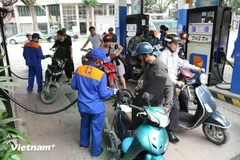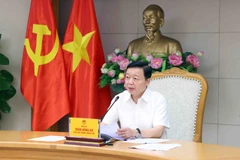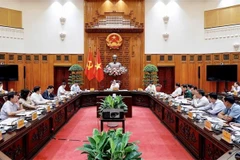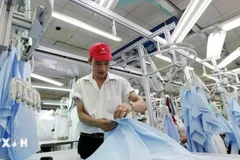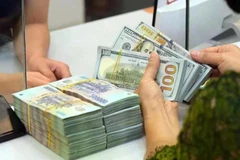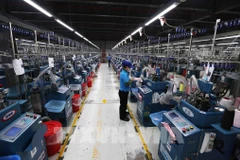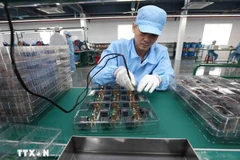The statement released by the centralbank confirmed that the prime rate will continue at 9 percent, while thediscount rate will remain unchanged at 13 percent and the refinancingrate at 14 percent. Interbank open market operations will continue to bemanaged flexibly, the statement said.
In a meeting onAug. 28 with representatives of 12 major commercial banks, Binh said thecentral bank will apply comprehensive measures to force the banks tocomply with the State Bank's cap on deposit interest rates, currently at14 percent per year.
Many domestic lenders have beenviolating the cap, offering 17.5 percent for one-month deposits or 15-16percent per year for three-month deposits.
To moreeffectively enforce the cap, the newly-named central bank chiefannounced tweaks to some existing regulations in Circular No 13 andCircular No 19 issued by the State Bank last October under then GovernorNguyen Van Giau.
The two circulars allowed banks toconsider 25 percent of non-term corporate deposits as funds availablefor lending, as well as capital borrowed from other institutions atterms of three months or more. The circulars allowed a loans-to-depositratio of 80 percent for commercial banks, and 85 percent for non-bankingcredit institutions.
Binh said these regulations were nolonger suited to the current financial market, adding that reducingcapital input costs was vital to bringing down borrowing costs forVietnamese enterprises.
Binh reiterated his determinationto cut average lending interest rates for businesses to around 17-19percent by next month without injecting additional capital into thebanking system.
Current borrowing costs for productionenterprises were averaging 17-21 percent per year at State-owned banks,21-24 percent at private commercial banks, and 20-22 percent atfinancing companies.
Binh said that slashing commerciallending rates to 17-19 percent was feasible because the banking systemhad sufficient capital on hand. This was reflected by the low interbankrates of 9.4-13 percent per year.
The general director ofone commercial bank present at the meeting agreed, saying, "We don'tlack of capital. However, if we cut deposit interest rates, depositorswill immediately move to other banks."
He blamed small banks for igniting an interest rate war.
A representative of a smaller bank countered that they offered highinterest rates meet the demand of borrowers and the bank was also underpressure to prepare for a possible increase in the compulsory reservesratio.
Binh also said that the central bank willreconsider money supply targets, following a 6 billion USD buy-in offoreign reserves.
The nation's total money supply wasestimated by the State Bank at 2,500 trillion VND (120.2 billion USD).Of the total, 2,100 trillion VND (101 billion USD) was being held inlocal banks as reserves or restricted deposits.
However,the money supply expanded at a rate of 2.45 percent in the first sixmonths of the year, well behind the pace of the Government's target of15-16 percent for the year. This has, in turn, slowed credit growth wellbelow the 20-percent target for the year, with commercial bank creditexpanding by just over 7 percent in the first six months of 2011./.
